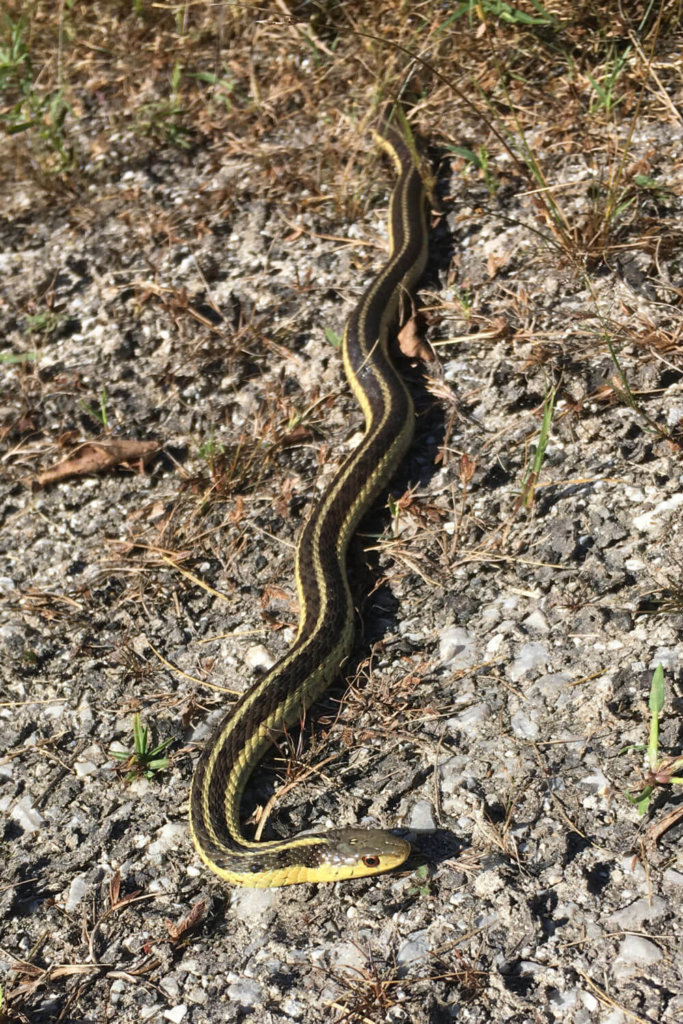Great horned owls in the ‘hood
About 10 days ago, as I drifted toward sleep, a deep echoing hoo-hoo floated through the open window. A few seconds later, another and then another. It seemed early in the season for the great horned owl to be calling in the night in search of a mate, but this eerie sound is unmistakable. There was only one voice, likely the male. While the female great horned owl is larger than her mate, the male has a deeper voice. As mating season unfolds, pairs will call together, the two pitches rolling together through the cold darkness.
A few fun facts about great horned owls, which are fairly common in Charlotte:
They are fierce predators that eat rodents and frogs, as well as larger prey, including crows and other owls. Their clenched talons require 28 pounds of pressure to open. This strength can sever the spine of large prey.
The great horned owl is the most dangerous predator of the American crow. Crows take their revenge by mobbing and harassing owls for hours. If nearby crows are cawing loudly, be on the lookout for a great horned owl.
Final fact: the oldest great horned owl on record was at least 28 years old when it was found in Ohio in 2005.
Beavers are back
 After a long absence, beavers have returned to Charlotte Park and Wildlife Refuge (CPWR), taking residence in the northwest corner of the property. On a recent Sunday, Bob Hyams of Habitat Restoration Solutions and CPWR Oversight Committee member and volunteer Julian Kulski slogged upstream in a waist-deep tributary of Holmes Brook. Wearing fishing waders, they deployed ski poles and long sticks to keep their balance on the invisible footing below. The pair were taking measurements and assessing the impact of nature’s engineers on the landscape.
After a long absence, beavers have returned to Charlotte Park and Wildlife Refuge (CPWR), taking residence in the northwest corner of the property. On a recent Sunday, Bob Hyams of Habitat Restoration Solutions and CPWR Oversight Committee member and volunteer Julian Kulski slogged upstream in a waist-deep tributary of Holmes Brook. Wearing fishing waders, they deployed ski poles and long sticks to keep their balance on the invisible footing below. The pair were taking measurements and assessing the impact of nature’s engineers on the landscape.
Beavers are a keystone species, meaning that they create an environment that attracts other species. They create wetland or edge habitat, where species richness is the greatest. Their labors slow the flow of water, turning a stream into a series of ponds and wetlands. The slower flow increases percolation of groundwater and decreases erosion and sediment entering Lake Champlain. Hyams notes, “Just since last spring, beavers have reestablished bank-full conditions within the stream channel and have created 4,800 square feet of inundation in five separate ponds.” He adds, “Pond depths can reach up to four feet–pretty incredible considering that last year this was an intermittent stream that could be difficult to locate within the dense vegetation.”
The CPWR volunteers plan to clear invasive vegetation this winter so that visitors can view the beavers’ handiwork more easily.
Snakes

As our climate changes, winter is arriving later. Local manifestations this fall included late foliage and frost and the latest recorded freeze date for Mount Mansfield. While bird migrations are triggered by daylight hours and temperature, cold-blooded snakes respond exclusively to ambient temperature. On warm days, some snakes are still active. They need a warm place to overwinter, a shelter below the frostline. As many as 100 snakes can cohabitate in a hibernaculum, a winter den where they intertwine to retain heat. Another fun fact courtesy of the Vermont Center for Ecostudies: snakes slow their metabolism and stop eating, allowing species that would ordinarily eat each other to cohabitate without incident.
Red-tailed hawks
Most raptors that summer in Vermont began their southern journeys a few months ago. Responding to climate change, a growing number of red-tailed hawks are wintering farther north in warmer years, a good number in the Champlain Valley. With a four-foot wingspan, these large birds of prey are easy to spot as they soar overhead, floating on wind currents to conserve energy as they hunt for rodents and other prey. In the coming months, keep an eye out for these red-tailed winter residents.

